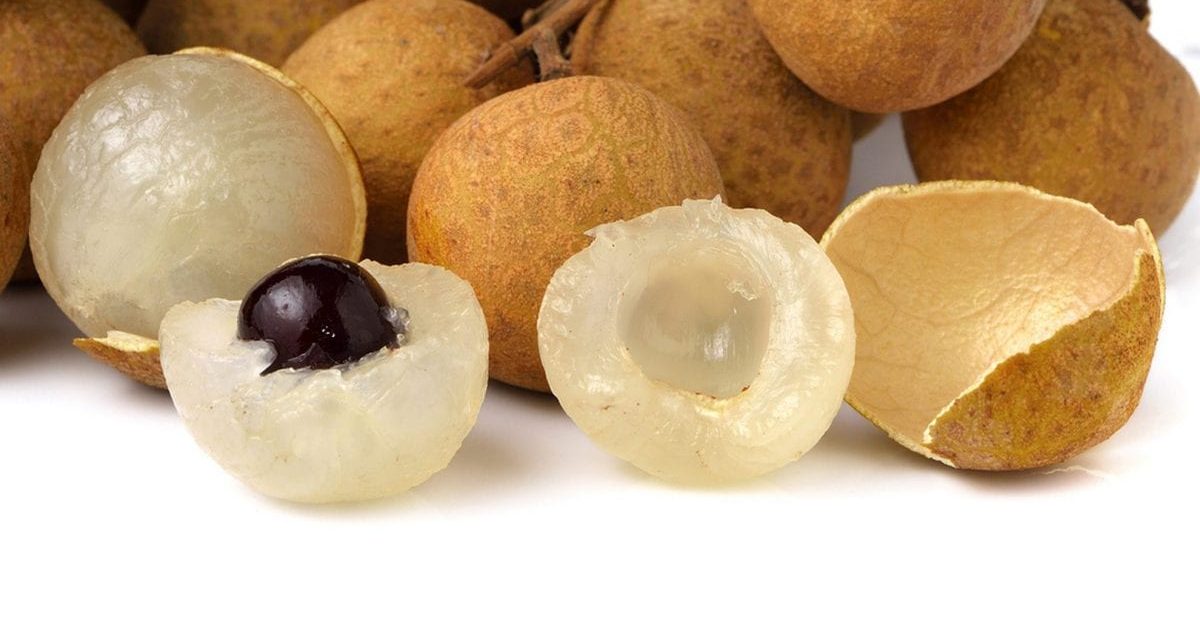Wonderful Benefits of Longan Fruit
Eye of the Dragon, this is how the Chinese call this small fruit from Southeast Asia. A cousin of lychee, it does not however enjoy the same popularity in our latitudes. And that’s a shame because it has great qualities to promote: a very sweet pulp, a thin and smooth skin, it is a delicious fruit that is easy to transport and eat. Ripening just after the lychee, it thus extends the exotic pleasures for fans of this fruit.
So let’s take a (dragon’s) eye on what’s behind this little-known fruit. Longan: all you need to know in 2 minutes about this fruit still confidential in Europe.
Longan is a fruit from the so-called “longan tree”. It takes its name from the Cantonese lung ngaan and the Vietnamese long nhan which means “dragon’s eye”. Indeed, longan is an edible fruit of oval shape. It is part of the Sapindaceae family like lychee, quenettier and rambutan.
The fruit of the longan tree, a tropical tree native to Asia
The longan tree is a tropical and subtropical tree that can reach a height of over 20 meters. It is characterized by large evergreen green leaves, a thick, solid trunk, and cracked brown cork-like bark. The flowers of the longan tree are creamy white, even yellow, and are a real treat for the bees, which find in these flowers a subtle and very sweet nectar.
The fruit, longan, is similar in size to a lychee. Its skin, on the other hand, is yellow-brown in color, and has small asperities less marked than those of its famous cousin. Once the fruit is picked, this husk can quickly turn brown to tend towards dark brown. This is why this fruit is picked most of the time with its branch, to keep the beautiful colors of the fruit as long as possible. On average, longans are 2 cm in diameter, grow in clusters, and you can find up to 30 fruits per cluster.
Once the skin is removed, it is a white, juicy and sweet pulp that is offered to us. It’s hard to refrain from eating it to the fullest! Add more love in life with fildena or vidalista 60 tadalafil. But be careful not to swallow the black and shiny core it contains, because even if it is renowned in traditional Chinese medicine for its soothing virtues, it is in infusion and not by ingesting it that he will pass on his virtues to you!
It is the white spot which is in the middle of this core which recalls an eye and which earned it the name of the Dragon Eye.
It can also be noted that the size of the nucleus differs depending on the variety of longan. And there is a great diversity: the Diamond River (Thailand), the Biew Kiew (Thailand), the Kohala (Hawaii Island) or the Fukien Lungan (China) to name a few.
Season and growing areas
The longan tree is traditionally cultivated in the south-east of China, in the north of Thailand, but especially in Vietnam (north and south). It is a tree that grows naturally in deep, light and humus soil. Longan tree can be cultivated either from a stone of the fruit, which is buried under a few centimeters of light potting soil, or by cuttings.
As an exotic tree, it does not tolerate the cold very well and freezes when temperatures are around -4 ° C. Its culture in pot is possible, but the longagnier will not be able to develop there as a fruit tree, and will remain at the stage of decorative shrub.
Apart from its endemic areas, the longan tree can therefore be grown in geographical areas with light frost: in the Indian Ocean it has become acclimatized to the islands of Madagascar, Mauritius and Reunion, and there are also longan plantations in California and Florida.
Price per kilo = approximately 15 €
As with any fruit, the price per kilo of longan depends on many factors such as the maturity of the fruit, the variety, the size, or even the freshness. But on average, a kilo of longan costs around 15 euros. And to make the right choice when buying, ask to taste the fruit. If it is bitter, then it is not yet fully mature. Also, pay special attention to its shell at the time of purchase, which must be free of any bumps or cracks which would then be a sign of damaged fruit of poor quality.
Longan: benefits, virtues and culinary uses
The health benefits and nutritional qualities of longan are numerous and undeniable. In Asia, it has just as much its place in the kitchen as in the traditional pharmacopoeia. It can be eaten raw, in juice or even dried.
Longan: calories and nutritional values
Longan is an exotic fruit very low in calories; there are barely 20 calories per fruit. And yet, it is extremely rich in vitamins A, C and D as well as minerals like calcium, iron or potassium.
For a content of 100 grams, we find:
- 83% water
- 60 kcal of calories
- 30 grams of protein
- 10 grams of lipids
- 10 grams of carbohydrates
- 10 grams of dietary fibers
- 13 mg of iron
- 266 mg of Potassium
- 21 mg of phosphorus
- 10 mg of magnesium
- 84 mg of vitamin C
- 10 mg of calcium
Longan – the fruit of well-being
This sweet fruit carries a high level of potassium, thus decreasing blood pressure. Vidalista 40 and tadalista add more intimacy in your life. For good reason, this mineral is a vasodilator capable of releasing tension in the blood vessels as well as in the arteries. Results: its consumption minimizes strokes, heart attacks or even atherosclerosis.


















